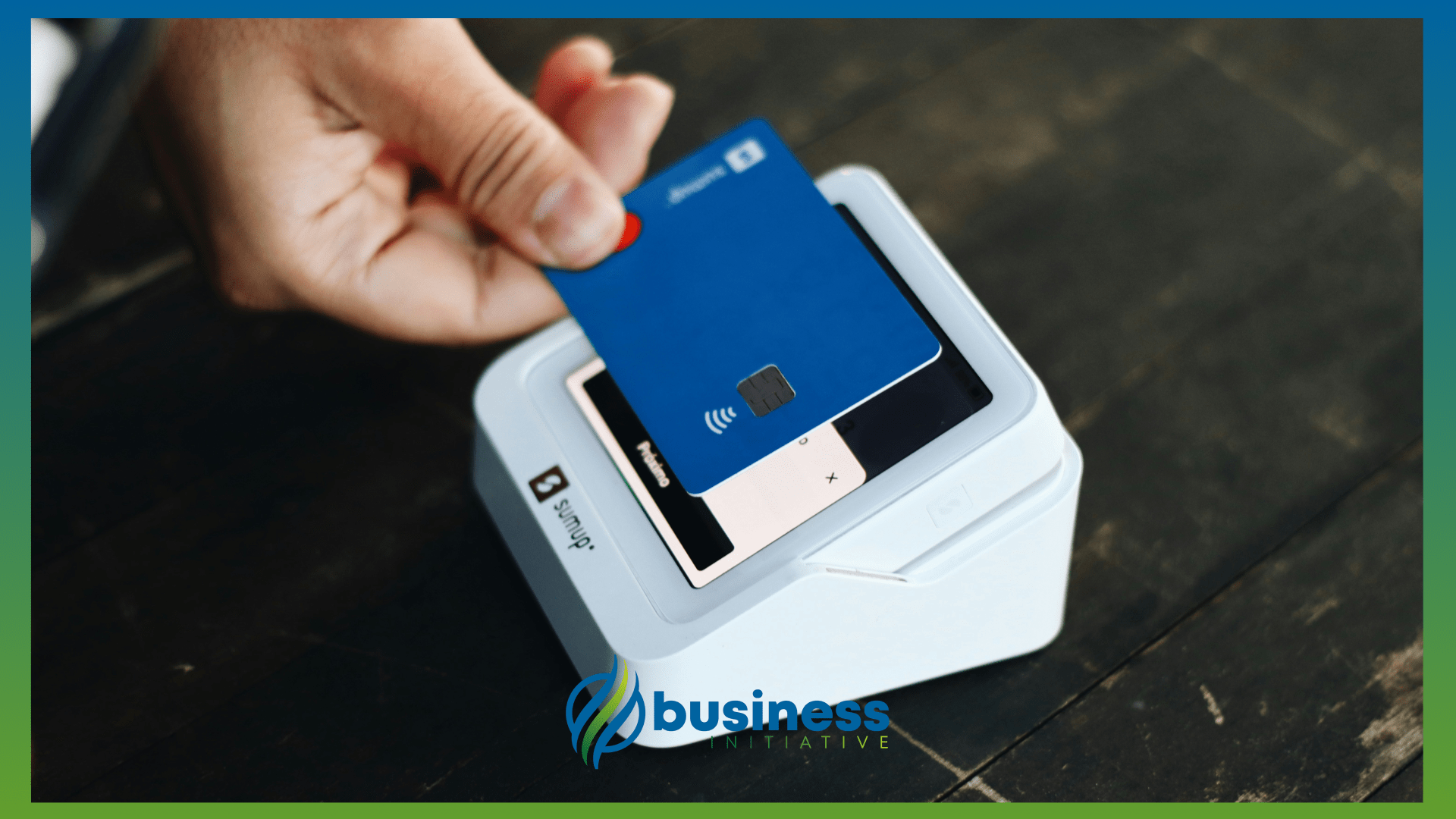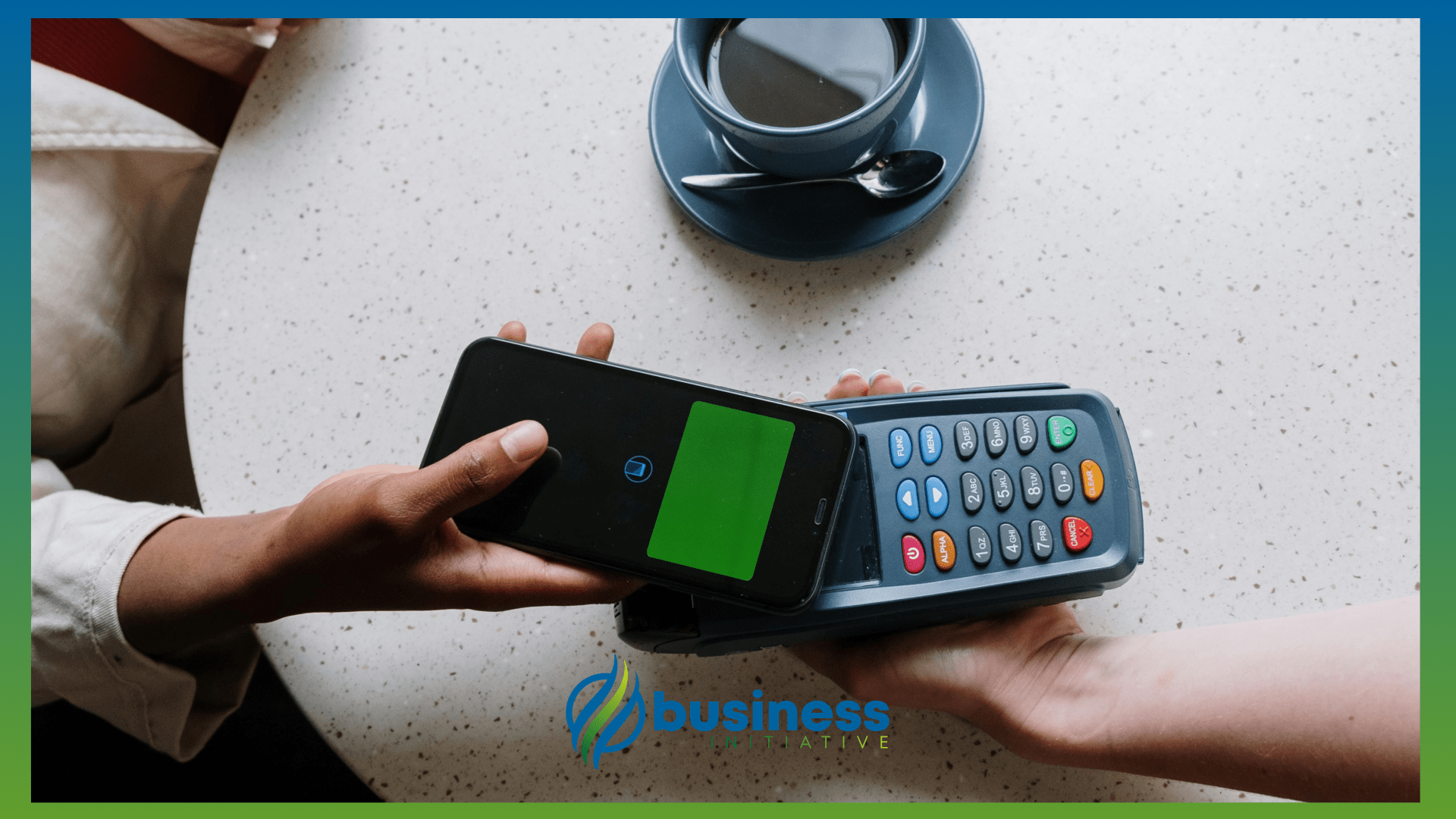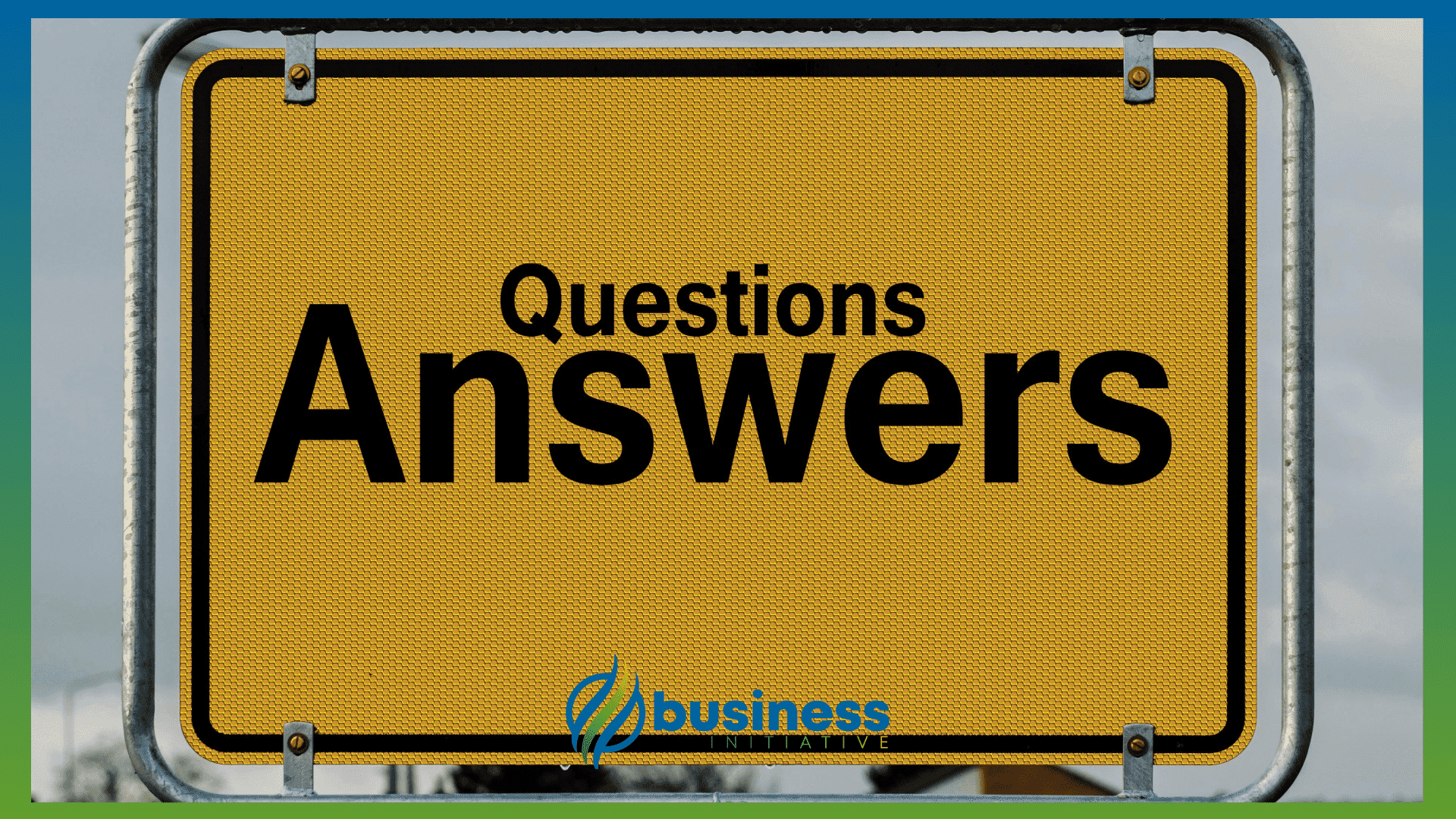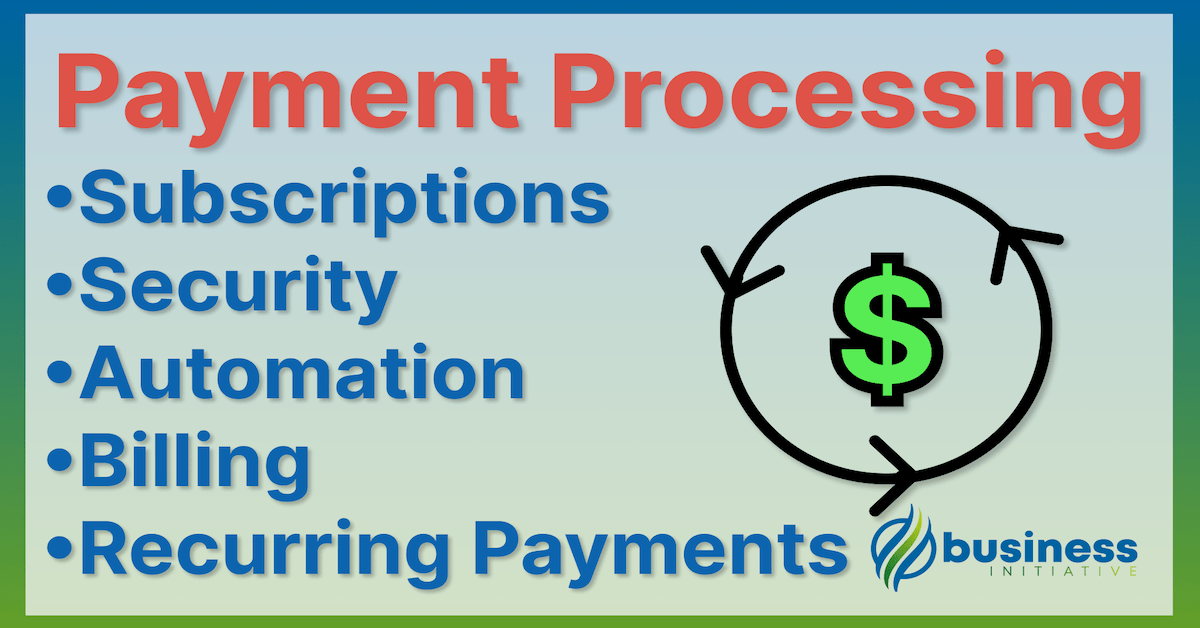Payment processes, automation, and subscriptions are crucial components of any business that deals with financial transactions.
These aspects can make or break a company’s success, as inefficient payment processes can lead to lost revenue and frustrated customers.
 Key Takeaways
Key Takeaways
- Streamline your payment processes: To avoid lost revenue and frustrated customers, make sure your payment processes are efficient and user-friendly. This will ensure a positive customer experience and maximize revenue.
- Automate transactions: Automating transactions can free up valuable time for you and your team while reducing the risk of human error.
- Set up subscription services: Creating recurring revenue streams through subscriptions can provide a reliable source of income for businesses while also improving customer retention.
- Stay up-to-date on the latest trends: Keeping abreast of new technologies can help businesses stay competitive and improve their operations, especially in payment processing.
- Choose a payment processing provider: Selecting the right provider is crucial for ensuring a smooth payment process that meets your business's unique requirements. Choose a provider that can meet your specific needs.
In today’s fast-paced digital world, it’s more important than ever for businesses to streamline their payment processes and automate transactions.
This comprehensive guide is designed to help businesses and entrepreneurs navigate the complex world of payment processes, automation, and subscriptions.
With the rise of subscription models and increasing competition, businesses need to be able to quickly and easily manage billing and payments in order to stay ahead.
Whether you’re just starting out or looking to optimize your existing systems, this guide has something for everyone.
 Table of Contents
Table of Contents
In this guide, we’ll cover everything from the basics of payment processing to advanced automation techniques as well as the benefits of setting up subscription services and provide tips on how to do it effectively.
You’ll also learn about the latest trends in payment processing technology and how they can help improve your business operations.
By the end of this guide, you’ll have a clear understanding of how to optimize your payment processes, automate transactions, and set up effective subscription services.
So whether you’re a small business owner or a seasoned entrepreneur, read on to discover how you can take your business to the next level.
Ready to get started?
Let’s dive in!
Importance of Reliable Payment Processing
Efficient payment processes are critical for businesses looking to streamline operations and improve customer satisfaction.
By automating billing and payment processes, businesses can reduce the risk of errors and ensure that customers are only charged for the services they want .
This can also help reduce churn and increase customer retention, as customers are more likely to stick around if the payment process is seamless.
The Rise of Automation and Subscription Models
The rise of automation and subscription models has transformed the way businesses approach billing and payments.
Subscription-based businesses have grown nearly 6 times faster than S&P 500 companies over the past decade, highlighting the importance of this model in today’s economy.
By automating billing and payment processes, businesses can reduce costs, improve accuracy, and offer a more seamless experience for customers.
➤ MORE: Make more money and extent your customer lifetime value with an effective pricing strategy!
Understanding the Most Common Payment Processes

Credit and Debit Cards
Credit and debit cards are among the most popular payment methods worldwide.
These payment methods are widely accepted by both online and brick-and-mortar stores.
Major credit card networks include Visa, Mastercard, and American Express, while debit cards are typically issued by banks and linked directly to a customer’s checking account.
Bank Transfers
Bank transfers, also known as wire transfers or electronic funds transfers (EFT), enable individuals and businesses to send money directly from one bank account to another.
Bank transfers are commonly used for paying bills, transferring money between accounts, and receiving salaries.
E-Wallets
E-wallets (electronic wallets) are digital payment platforms that store users’ financial information and enable them to make transactions without the need for a physical card.
Examples of popular e-wallet services include PayPal, Venmo, and Google Pay.
E-wallets offer convenience, security, and often provide additional features such as rewards programs or cashback options.
Cryptocurrencies
Cryptocurrencies are digital or virtual currencies that use cryptography for security and operate on decentralized networks called blockchains.
Bitcoin is the most well-known cryptocurrency, but there are thousands of others like Ethereum, Litecoin, and Ripple.
As of September 2021, there were over 11,000 cryptocurrencies with a total market capitalization of around $2.1 trillion.
While not yet widely accepted for everyday transactions, cryptocurrencies are increasingly being used for online purchases, remittances, and investment.
Payment Gateways and Processors

Definition: Payment gateways and processors are essential components of the e-commerce ecosystem.
A payment gateway is a software application that enables online merchants to securely transmit customers’ payment information to their bank or payment processor for authorization and settlement.
Payment processors, on the other hand, are financial institutions or third-party companies that execute the actual payment transactions between buyers and sellers.
Payment gateways and processors work together to ensure that online transactions are secure and seamless.
Popular Payment Gateways
There are many payment gateways available for online merchants.
Here are some of the most common examples of payment gateways companies are using today…
Stripe is a global payment platform with over 1 million active users in 40 countries.
Square is a popular payment gateway for small businesses, with features like point-of-sale systems and inventory management tools.
PayPal, which also offers e-wallet services as mentioned earlier, is widely used for online purchases worldwide.
Authorize.net is a payment gateway with over 440,000 active merchants and offers features like fraud detection and prevention.
Factors to Keep in Mind
When choosing a payment gateway, there are several factors to consider.
One important factor is the cost structure, which can include fees for transactions, monthly subscriptions, chargebacks, and other services.
Another factor is the security protocols offered by the payment gateway.
Payment gateways should adhere to industry standards for data encryption and fraud prevention to ensure safe transactions.
Additionally, the payment gateway’s compatibility with your website or e-commerce platform is important to consider.
Some payment gateways may require specific coding or integration with certain platforms.
Payment Security and Compliance Tools

Ensuring payment security is crucial for any online merchant.
Payment data breaches can lead to significant financial losses, damaged reputation, and legal consequences.
Here are some essential tools and practices to help maintain payment security.
PCI DSS
The Payment Card Industry Data Security Standard (PCI DSS) is a set of security standards established by major credit card companies to protect against payment data breaches.
Compliance with PCI DSS is mandatory for all organizations that accept credit card payments.
The standard includes requirements for network security, data protection, and access control.
Failure to comply with PCI DSS can result in hefty fines and the loss of the ability to process credit card payments.
SSL Certification
Secure Sockets Layer (SSL) certification is another essential tool for payment security. SSL is a protocol that encrypts information transmitted between a website and its users.
When a website has an SSL certificate, its URL begins with “https” instead of “http”, indicating that the site is secure.
SSL certification helps prevent hackers from intercepting or stealing sensitive information like credit card numbers or login credentials.
Tokenization and Encryption
Tokenization and encryption are two additional methods used to secure payment data.
Tokenization replaces sensitive information like credit card numbers with unique tokens.
These tokens cannot be used for fraudulent transactions and are only valid for a specific payment request.
Encryption involves converting payment data into an unreadable format that can only be decrypted with a specific key.
➤ MORE: Integrate blockchain tech into your business!
How to Set Up Automated Payments?

Payment automation can offer significant benefits to businesses, but setting up automated payment systems requires careful planning and implementation.
Here are some key considerations for setting up payment automation.
Choosing the Right Automation Tools
Choosing the right automation tools is critical for successful payment automation.
There are a variety of payment automation tools available, each with different features and capabilities.
Some common payment automation tools include accounting software, payment gateways, and online invoicing platforms.
When choosing automation tools, it’s essential to consider factors like cost, ease of use, and compatibility with existing systems.
Integration with Existing Systems
Integrating automated payment systems with existing accounting and financial systems is another critical consideration.
Payment automation systems should be able to integrate smoothly with existing systems to avoid duplication of efforts and ensure accurate financial reporting.
APIs (application programming interfaces) can facilitate integration between different systems and streamline data transfer.
Automating Invoicing and Billing
Invoicing and billing are two key areas where payment automation can have a significant impact.
Automating invoicing and billing can reduce manual errors, speed up payment processing, and improve cash flow management.
Online invoicing platforms like FreshBooks or QuickBooks can automate the invoicing process by generating invoices automatically, sending reminders for overdue payments, and accepting online payments.
Benefits of Payment Automation

Payment automation refers to the use of technology to streamline payment processes and reduce manual labor.
Here are some key benefits of payment automation…
Streamlined Processes
Payment automation can significantly streamline payment processes, reducing the time and effort required for manual tasks like data entry and reconciliation.
Automated payments can be scheduled and processed in bulk, allowing for more efficient cash flow management and faster payments to vendors and suppliers.
This can result in increased productivity, improved accuracy, and reduced overhead costs.
Reduced Manual Errors
Manual errors can be a significant source of financial loss for businesses.
Payment automation eliminates the need for manual data entry, reducing the risk of errors like double payments, incorrect amounts, or missed payments.
Automated systems can also flag potential errors or discrepancies for review before payments are issued.
Enhanced Security
Payment automation can also enhance payment security by reducing the risk of fraud or theft.
Automated payment systems can validate payment information against pre-established rules and protocols, such as those outlined by PCI DSS or other compliance standards.
Automating payments can also reduce the risk of internal fraud or unauthorized access to sensitive financial data.
Common Challenges Business Face with Automated Payments

While payment automation can offer many benefits to businesses, there are also some challenges that can be prevented by establishing robust security measures, clear policies and procedures, and compliance best practices.
Here are some of the key challenges of payment automation and potential solutions…
Fraud Detection and Prevention
Automated payment systems can be vulnerable to fraudulent activity like credit card fraud or phishing scams.
To prevent fraud, businesses should implement robust security measures like two-factor authentication, encryption, and monitoring for suspicious activity.
Some payment automation tools also offer fraud detection and prevention features, such as real-time transaction monitoring and machine learning algorithms that can detect unusual patterns or behaviors.
Managing Failed Transactions
Automated payments can fail for a variety of reasons, such as insufficient funds, expired credit cards, or technical issues.
To manage failed transactions effectively, businesses should have clear policies and procedures in place for handling errors and communicating with customers.
Some payment automation tools also offer automated retry features that can automatically attempt to process failed payments at a later time.
Keeping Up with Regulatory Changes
Payment regulations can be complex and change frequently, making it challenging for businesses to keep up with compliance requirements.
Failure to comply with regulations like PCI DSS or GDPR can result in legal penalties or reputational damage.
To stay compliant, businesses should stay up-to-date on regulatory changes and implement best practices for data security and privacy.
Payment automation tools can also help with compliance by offering features like secure data storage, encryption, and audit trails.
Types of Subscription Models with Examples

Subscription-based revenue models have become increasingly popular among businesses because they provide a predictable and recurring source of revenue.
Here are three common types of subscription models…
Recurring Flat-Rate Subscriptions
Recurring flat-rate subscriptions are the most straightforward type of subscription model.
Customers pay a fixed fee at regular intervals (e.g., monthly, quarterly, or annually) for access to a product or service.
This model is popular among software-as-a-service (SaaS) companies that offer cloud-based applications or tools.
For example, Adobe Creative Suite offers monthly and annual subscription plans for its suite of creative software.
Usage-Based Subscriptions
Usage-based subscriptions charge customers based on how much they use a product or service.
This model is often used by companies that offer utilities or services like electricity, water, or internet access.
For example, Amazon Web Services (AWS) charges customers based on their usage of cloud computing resources like storage, compute power, and data transfer.
Usage-based subscriptions can provide greater flexibility for customers who may have varying levels of demand for a product or service.
Tiered Pricing Models
Tiered pricing models offer different levels of access or features at different price points.
This model is often used by companies that offer software or online services with multiple tiers of functionality.
For example, Dropbox offers a range of subscription plans that provide varying levels of storage capacity and features like file sharing and collaboration tools.
Tiered pricing models can provide greater value for customers who may have different needs and budgets.
Pros and Cons of Subscription Models
Subscription-based revenue models have become increasingly popular among businesses because they offer numerous benefits, but they also come with some potential drawbacks.
By carefully weighing the pros and cons of subscription models, businesses can determine whether this revenue model is right for them.
Here are some of the pros and cons of subscription models…
Pros
- Predictable Revenue
One of the biggest advantages of subscription models is that they provide a predictable and recurring source of revenue.
This can help businesses plan and budget more effectively, which is particularly important for startups and small businesses.
Subscription revenue is also less susceptible to fluctuations in demand or seasonality, which can be a challenge for businesses with more traditional revenue models.
- Increased Customer Retention
Subscription models can also help businesses increase customer retention rates. When customers subscribe to a product or service, they are more likely to continue using it over time than if they make a one-time purchase.
This can lead to higher lifetime customer values and lower customer acquisition costs.
Subscription models also provide businesses with more opportunities to engage with customers and gather feedback, which can improve product development and customer satisfaction.
Cons
- Challenges in Customer Acquisition
One of the biggest challenges with subscription models is acquiring new customers. Convincing customers to commit to a recurring payment can be a harder sell than a one-time purchase.
Additionally, subscription models require businesses to continually provide value to customers in order to retain their subscriptions.
This can be challenging for businesses that struggle to innovate or differentiate themselves from competitors.
Examples of Successful Subscription-based Businesses
Subscription-based revenue models have proven to be successful for a variety of businesses across different industries.
Here are some examples of subscription-based businesses that have achieved significant success:
Netflix
Netflix is a leading provider of streaming video content, with over 208 million paid subscribers in more than 190 countries.
The company’s subscription model allows customers to access a vast library of movies and TV shows for a monthly fee.
Netflix’s revenue has grown steadily over the years, reaching $7.16 billion in Q1 2021.
The company’s success is due in part to its investment in original content, which has helped it differentiate itself from competitors and attract new subscribers.
Spotify
Spotify is a music streaming service that offers both free and paid subscription plans.
As of Q4 2020, the company had 345 million monthly active users, including 155 million premium subscribers.
Spotify’s revenue has also grown steadily over the years, reaching €7.88 billion in 2020.
The company’s success is due in part to its personalized recommendations and curated playlists, which provide users with a unique and engaging listening experience.
Salesforce
Salesforce is a cloud-based software company that offers a range of business applications and services on a subscription basis.
As of Q4 2021, the company had over 150,000 customers and generated $21.25 billion in revenue for the year.
Salesforce’s success is due in part to its focus on customer relationship management (CRM) software, which has become increasingly important for businesses looking to manage customer interactions and improve customer satisfaction.
Choosing the Right Subscription Model

Choosing the right subscription model can be critical to the success of your business.
By taking the following factors into account, you can develop a subscription plan that meets the needs of your customers and helps you achieve sustainable growth and revenue.
Here are some key points to consider when selecting a subscription model…
Assessing Your Target Market
Understanding your target market is essential when choosing a subscription model.
You should consider factors such as age, income, and purchasing habits to determine what type of subscription offering will appeal to your customers.
For example, younger consumers may be more interested in a low-cost, flexible subscription plan, while older consumers may prefer a premium plan with more features.
Analyzing Competitor Offerings
Analyzing your competitors’ subscription offerings can help you identify gaps in the market and determine what type of subscription plan will best meet the needs of your customers.
You should evaluate factors such as pricing, features, and customer service to determine how you can differentiate your offering from those of your competitors.
Identifying Your Value Proposition
Your value proposition is what sets your subscription offering apart from others in the market.
It should clearly communicate the benefits of your product or service to potential customers and explain why they should choose your offering over those of your competitors.
This may involve offering unique features, pricing strategies, or customer service options.
How to Manage Customer Billing and Payments?
Billing and payment management is a critical aspect of any subscription business.
By using a subscription billing platform, handling payment failures and disputes effectively, and automating renewals and cancellations, you can streamline your operations and improve customer satisfaction.
Here are some of the more important things to have in mind when managing billing and payments…
Subscription Billing Platforms
Using a subscription billing platform can simplify the billing process and reduce the risk of errors.
These platforms automate invoicing, payment processing, and recurring billing, and can integrate with other tools such as customer relationship management (CRM) systems.
Some popular subscription billing platforms include Chargebee, Recurly, and Zuora.
Handling Payment Failures and Disputes
Payment failures and disputes can be a common issue for subscription businesses.
It’s important to have a clear process in place for handling these situations to minimize the impact on your business.
This may involve setting up automated notifications for failed payments, offering alternative payment methods, or working with customers to resolve payment disputes.
Automating Renewals and Cancellations
Automating renewals and cancellations can help streamline the subscription management process.
By automating these tasks, you can reduce the risk of errors and ensure that customers are only charged for the services they want.
This may involve setting up automated reminders for upcoming renewals or cancellations, or providing customers with self-service options for managing their subscriptions.
How to Optimize Pricing for Your Subscription Service?
Optimizing subscription pricing is an ongoing process that can help maximize revenue and attract and retain customers.
By continually refining your pricing strategy, you can maximize revenue and build a loyal customer base.
Here are some key strategies to consider…
A/B Testing Pricing Strategies
A/B testing involves comparing two different pricing strategies to determine which one is more effective.
This can involve testing different price points, subscription durations, or features.
By using A/B testing, you can gather data on customer behavior and preferences and make informed decisions about your pricing strategy.
Offering Trials and Discounts
Offering trials and discounts can be an effective way to attract new customers and encourage them to sign up for your subscription service.
For example, you could offer a free trial period or a discount on the first month of a subscription.
These promotions can also help you gather feedback from customers and make improvements to your offering.
Customer Feedback and Analysis
Collecting feedback from customers is essential when optimizing subscription pricing.
This can involve conducting surveys, analyzing customer behavior data, or gathering feedback through customer support channels.
By listening to your customers, you can identify pain points in your pricing strategy and make changes that will improve customer satisfaction and retention.
FAQs - Frequently Asked Questions About Payment Processing

Why is streamlining payment processes important for businesses?
Streamlining payment processes improves efficiency and customer satisfaction.
Learn More...
Efficient payment processes reduce the time and effort needed to complete transactions, minimizing errors and operational costs.
A streamlined system ensures a smooth and quick checkout experience, enhancing customer satisfaction and retention.
Automation of payments also reduces manual labor and error, further improving transaction accuracy.
What are the benefits of automating transactions in a business?
Automating transactions saves time, reduces errors, and enhances security.
Learn More...
Automation allows businesses to process payments quickly and with fewer errors by minimizing manual data entry.
- It frees up resources, allowing staff to focus on more strategic tasks rather than repetitive ones.
- Automated systems have built-in checks that enhance transaction security, mitigating fraud risks.
This improved efficiency and security can lead to better overall financial management and customer trust.
How can subscription services impact a business's revenue?
Subscription services provide a stable, recurring revenue stream.
Learn More...
By offering subscriptions, businesses can predict their income more reliably, which helps in budgeting and financial planning.
This model fosters customer loyalty as subscribers are more engaged and less likely to switch to a competitor.
- Recurring revenue makes it easier to manage cash flows and invest in future growth.
- Subscriptions encourage long-term relationships, which can lead to increased spending over time.
What should businesses consider when choosing a payment processing provider?
Consider compatibility, security features, and fee structures.
Learn More...
Choosing a provider that integrates seamlessly with your existing systems minimizes setup time and technical challenges.
Look for robust security measures to protect sensitive payment information, complying with standards like PCI DSS.
- Assess the fee structure to ensure it fits your budget and doesn’t erode margins.
- Evaluate customer support and service reliability as they are crucial during transaction issues.
What are common challenges with payment automation and how can they be addressed?
Common challenges include technical issues, fraud, and regulatory compliance.
Learn More...
Technical glitches can be mitigated by choosing reliable automation tools and having a competent IT support team.
To combat fraud, implement advanced security protocols such as encryption and tokenization.
- Stay updated on regulatory changes to ensure compliance and avoid legal penalties.
- Regularly review and update your security and compliance measures to adapt to new threats.
How do different payment methods affect business operations?
Different methods offer various levels of convenience and security.
Learn More...
Credit and debit cards are convenient and widely accepted, but can come with higher processing fees.
E-wallets provide a quick and secure way to transact, often enhancing user experience with additional features like rewards.
- Cryptocurrencies offer low transaction fees and enhanced security but are less widely accepted.
- Each payment method has different implications for security, cost, and customer preference, affecting overall business operations.
What strategies can enhance the security of online payments?
Use encryption, tokenization, and secure gateways.
Learn More...
Encryption secures data transmission, while tokenization minimizes the exposure of sensitive data by replacing it with a unique identifier.
Employing secure payment gateways that comply with the latest security standards can help prevent data breaches.
- Regular security audits and compliance checks can further enhance payment security.
- Educating customers about secure payment practices also plays a crucial role in safeguarding transactions.
In Summary…
As the subscription business model continues to grow in popularity, it’s important for businesses to stay ahead of the curve and embrace new technologies and strategies.
Here are some key takeaways to keep in mind:
Embracing Payment Automation and Subscription Models
Automating billing and payment processes can help streamline operations and improve customer satisfaction.
By using a subscription billing platform and automating renewals and cancellations, you can reduce the risk of errors and ensure that customers are only charged for the services they want.
Staying Ahead of the Competition in a Dynamic Market
The subscription market is constantly evolving, and it’s important to stay up-to-date on the latest trends and technologies.
This may involve conducting market research, monitoring competitor pricing and offerings, or investing in new technologies.
By staying ahead of the competition, you can attract and retain customers and maximize revenue.
Continuous Improvement and Adaptation to Customer Needs
In order to succeed in the subscription economy, it’s critical to listen to your customers and adapt your offerings based on their feedback.
This may involve offering trials or discounts, A/B testing pricing strategies, or gathering feedback through surveys or customer support channels.
By continuously improving your offerings and adapting to customer needs, you can build a loyal customer base and drive growth.
Overall, subscription-based business models are becoming increasingly popular due to their ability to provide predictable revenue streams and improve customer retention.
Choosing the right subscription model, managing billing and payments effectively, and optimizing pricing strategies are all critical components of a successful subscription business.
By implementing the strategies outlined in this article, businesses can streamline operations, maximize revenue, and build a loyal customer base.
By using a subscription billing platform, businesses can automate billing and payment processes and reduce the risk of errors.
A/B testing pricing strategies, offering trials and discounts, and gathering customer feedback can help optimize subscription pricing and improve customer satisfaction.
At Business Initiative, we specialize in helping businesses implement subscription-based models and develop effective billing and payment management strategies.
Whether you’re just getting started with subscriptions or looking to optimize your existing offerings, our team of experts can help you achieve sustainable growth and revenue.
To learn more about how we can help your business succeed in the subscription economy, schedule a consultation call with us today or use our contact form.
Don’t forget to sign up for our newsletter and follow us on Twitter for the latest news and insights on subscription-based business models.
Sources & Additional Information
- Zuora - Subscription Economy Index
- CoinMarketCap - Total Market Capitalization
- Techopedia - Payment Gateway
- Stripe - About Us
- Square - Features
- PayPal - About Us
- Authorize.Net - About Us
- PCI Security Standards Council - Why Security Matters
- GlobalSign - SSL Certificates
- Techopedia - Tokenization
- IBM - Encryption
- Adobe Creative Suite Subscription Plans
- Amazon Web Services Pricing
- Dropbox Subscription Plans
- Netflix Q1 2021 Earnings
- Spotify - Company Info
- Entrepreneur - 5 Strategies for Optimizing Your Subscription Pricing Model
Here are some additional resources and sources of information for users looking to learn more about subscription-based business models:


